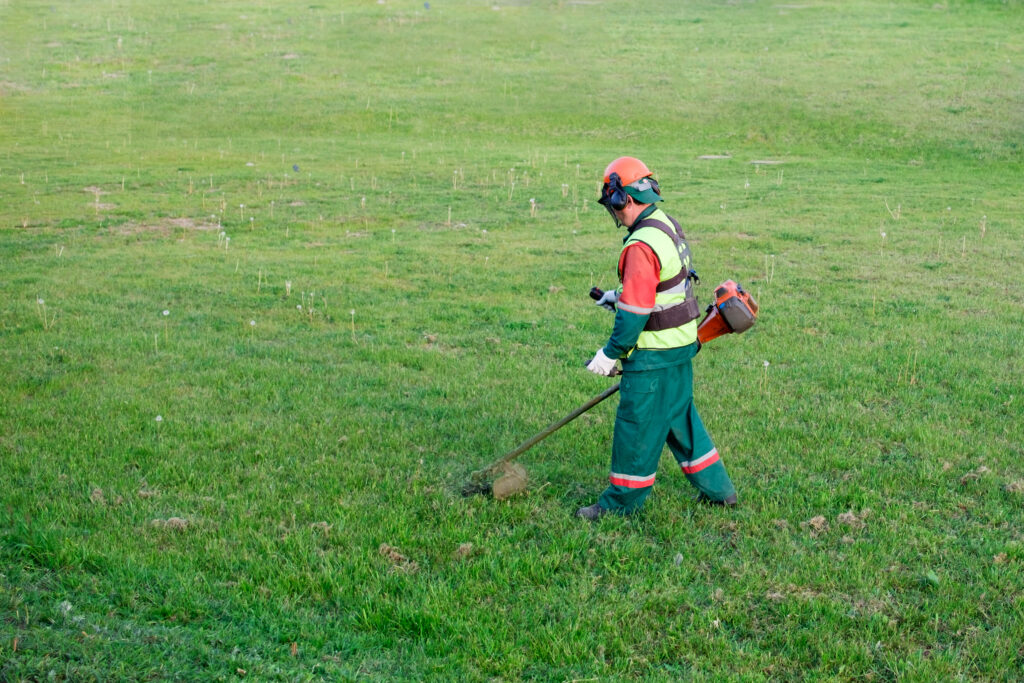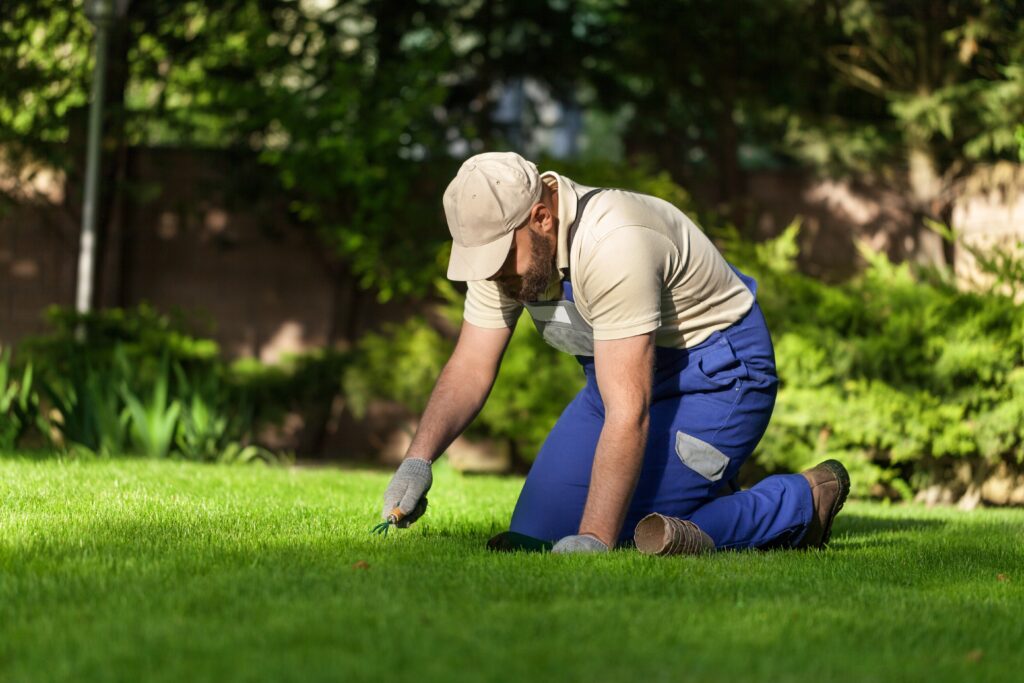How to Prevent Lawn Disease
Maintaining your lawn correctly will help to prevent many of the more common forms of grass disease. We have therefore developed a manual to assist you (How to Prevent Lawn Disease).
Lawn Disease & How to Prevent Lawn Disease
Although most lawn diseases are naturally occurring fungi found in lawns, their spread and growth into a problem depends on the correct environment.
Red thread, for instance, thrives in nitrogen-deficient lawns. Using a fertilizer high in nitrogen can help your grass retain a healthy green hue.
Applying lawn fungicide and overseeding can help eradicate any sizable red area in the grass, allowing the new green grass to flourish as intended. Although treating the illness with fungicide is helpful, in terms of lawn diseases, prevention is truly superior to cure. Correct grass upkeep addresses the following factors to aid in this process ( lawn fungus treatment ) :
1. Aeration
2. scarification
3. mowing
4. fertilization
5. fungal treatment

Scarify your lawn
Scarification is part of comprehensive lawn maintenance and can help prevent a variety of lawn diseases.
De-thatching
It is also known as scarification, which entails cutting dead moss and grass stems from your lawn (which will turn thatch if left unaltered). This coating of dead stuff can prevent moisture from reaching the grass’s roots, thereby killing the plant and producing more thatch. The thatch layer can also help to create a moist environment in which grass diseases flourish in wet weather. Eliminating the thatch from your grass will make it appear somewhat naked, but with reseeding and consistent watering, it will recover stronger and greener than before. Every 2 to 3 years, scarify and aerate your lawn.
Aerate your lawn
Your grass should be scarified, left a few days, then aerated. Good drainage is ensured by aeration; hence, it will be rather beneficial for the grass to survive scarification. Lawn aeration is poking holes in your grass. This releases any compacted soil, therefore enhancing drainage and enabling water to reach the grassroots. Better drainage helps to avoid waterlogging and keeps wet conditions on your lawn from lasting as long. This all helps to avoid the sort of environment that fungi, such as Fusarium patch disease, find ideal.

Mow your lawn
Mowing your lawn will help you to maintain a reasonable height, even if it is growing nicely. Mowing your lawn keeps the grass at the correct height for photosynthesis and nutrient absorption, promoting health enough to prevent illness. Keep the mower blades sharp; dull blades can crush the grass stems instead of cutting, therefore upsetting the grass. Like unhappy people, stressed grass is more prone to illnesses; so, maintaining sharp mower blades would help to solve this issue. Also, adjust the height of your mower as needed. Scalping—that is, cutting the grass too low—may result in lifeless brown grass. Unless you use preventative treatments like overseeding and top-dressing, dead areas can be perfect breeding sites for fungal and lawn illnesses.
Buy Natural Grass Carpet Rolls online and get delivery within 1 day at your doorstep. Call 8766234417 / 9354173113 / 8588914985 to make a purchase today!
Strengthen Your Garden
You should understand when to fertilize your lawn to maintain its health. The soil’s fertilizer enrichment will provide the grass with the necessary components for photosynthesis. Furthermore, fertilizing your grass will keep it healthy enough to prevent fungal growth. To flourish correctly, the fungus that causes illnesses such as red thread or leaf blight requires weak and poor-quality grass. A well-maintained lawn will stop that from happening.
Lawn Fungus Treatments
The application of fungicide should only be justified if the disease has grown to be a major concern. Once it has done its job, you should do the aforementioned chores to prevent the fungus from reoccurring in the future. Preventing lawn diseases will depend on scarifying, aerating, mowing, and fertilizing your grass. Should you be worried about the condition of your lawn, kindly Contact Balaji Nursery to assist you.
I recommend checking out:
- How to plant lawn grass: A Step-by-Step Guide
- Mowing Heights By Season And Grass Type
- What Is the Best Warm Season Grass for Your Lawn
- Natural Weed and Grass Killer Recipe for a Chemical-Free Lawn
- What type of machine is used to cut grass?
- 5 gorgeous flowering plants to bring home in summer
- 10 Stress Relieving Indoor plants for home
- 10 plants you can easily grow in a bottle
- 5 Easy Tips to Maintain a Tulsi Plant at Home
- 5 Medicinal Plants to Grow at Home
- 10 palm plants to grow at home
Last Updated on 1 year ago by Anjali Mehra Ph.D. in Horticulture (Punjab Agricultural University)
- Best Lawn Grass for High-Footfall Religious Places in Punjab - December 29, 2025
- Why Lawn Grass Fails After Installation (Real Indian Case Studies) - December 25, 2025
- Nilgiri Grass vs Korean Grass – Price, Look & Maintenance Compared - December 23, 2025
